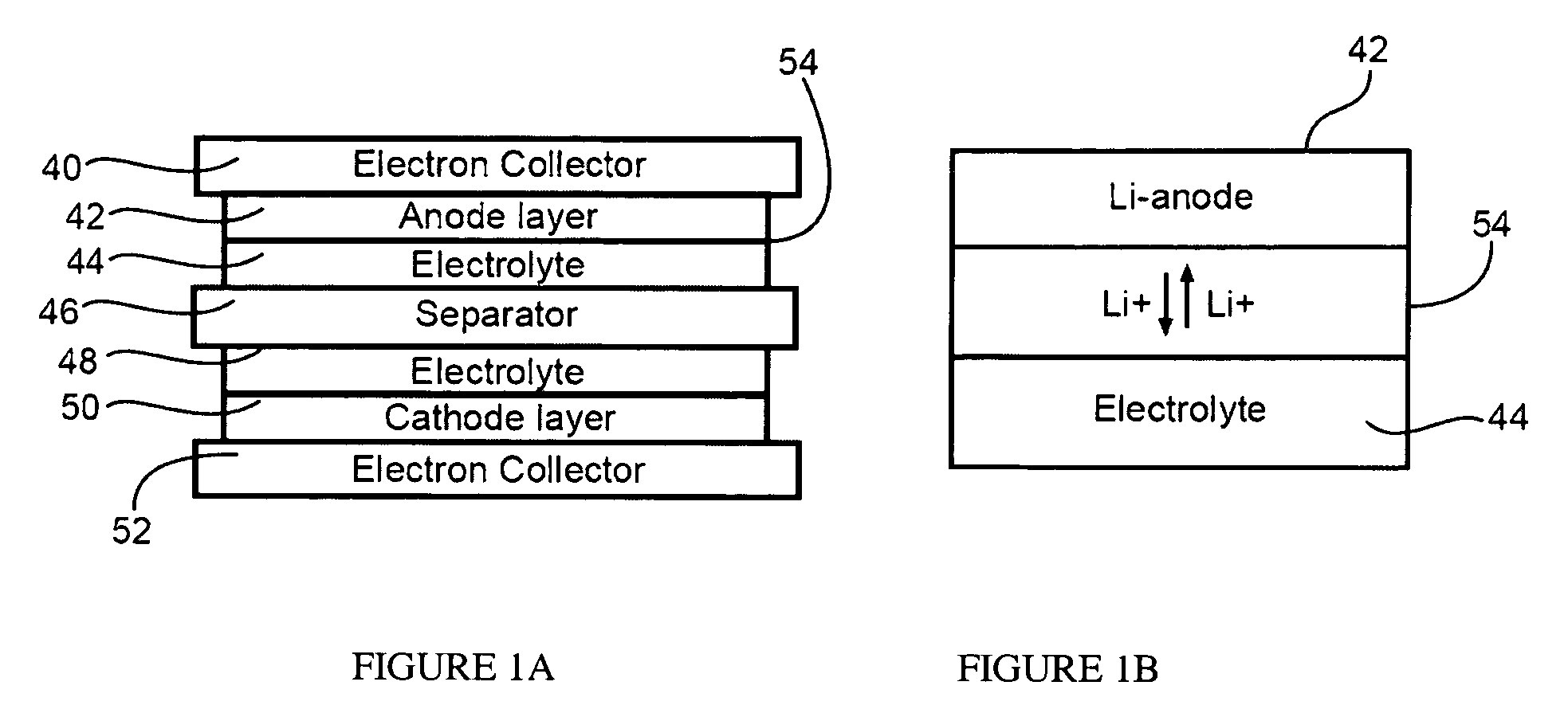Battery with molten salt electrolyte and protected lithium-based negative electrode material
a negative electrode material, molten salt technology, applied in the field of batteries, can solve the problems of reducing the practical use of the lithium-ion battery, affecting the service life of the battery, and high vapor pressure of the organic electrolyte,
- Summary
- Abstract
- Description
- Claims
- Application Information
AI Technical Summary
Benefits of technology
Problems solved by technology
Method used
Image
Examples
Embodiment Construction
[0012] An improved battery according to an example of the present invention, such as lithium battery or lithium sulfur battery, is particularly well suited for high density battery applications. An example battery includes a protection layer, which may be a surface film, which separates the negative electrode from the molten-salt electrolyte.
[0013] For example, a protection layer can be applied to a lithium metal negative electrode. The protection layer preferably has high lithium ion conductivity. A protective layer, such as a surface film, can be provided on the negative electrode, such as Li-metal, using either thin film coating, or chemical vapor deposition, Li-alloy formation methods. A thin film on the Li-metal surface acts as a protection layer to separate the molten salt electrolyte and the lithium negative electrode. Therefore, the reaction between the electrolyte and the negative electrode will be reduced, and may be prevented. The protective film is preferably a thin fil...
PUM
 Login to View More
Login to View More Abstract
Description
Claims
Application Information
 Login to View More
Login to View More - R&D
- Intellectual Property
- Life Sciences
- Materials
- Tech Scout
- Unparalleled Data Quality
- Higher Quality Content
- 60% Fewer Hallucinations
Browse by: Latest US Patents, China's latest patents, Technical Efficacy Thesaurus, Application Domain, Technology Topic, Popular Technical Reports.
© 2025 PatSnap. All rights reserved.Legal|Privacy policy|Modern Slavery Act Transparency Statement|Sitemap|About US| Contact US: help@patsnap.com


